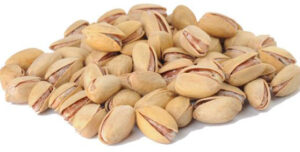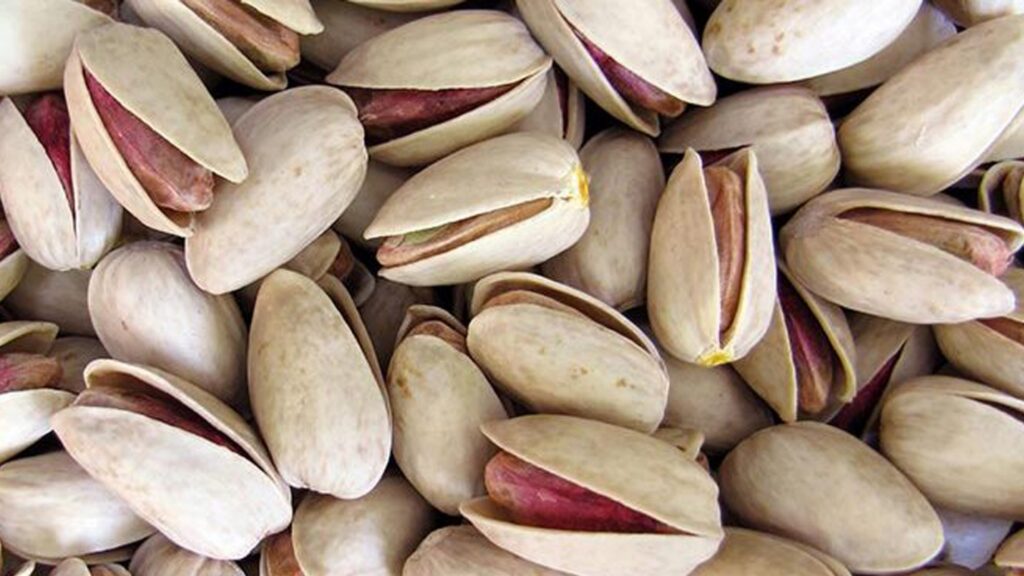Step 1 – Harvesting Pistachios
The pistachio harvesting season typically occurs in late summer or early fall. When pistachios are ready to harvest, their outer hulls naturally split open, indicating the nuts are ripe. Farmers use mechanical tree shakers to gently shake the pistachio trees, causing the nuts to fall to the ground or onto catching frames placed around the trees How to Proses Pistachio

Once collected, the pistachios are quickly transported to processing facilities to prevent any spoilage. Timely harvesting and transportation are critical because delayed processing can lead to mold growth, which affects the quality of the nuts.
Step 2 – Hulling and Cleaning
Immediately after harvesting, pistachios are hulled to remove their outer shells. The hull is the soft, fleshy part surrounding the hard pistachio shell. Removing it promptly is essential, as leaving the hull on for too long can stain the inner shell and degrade the quality of the pistachios.
In commercial operations, hulling machines quickly remove the hulls. After hulling, the pistachios go through a thorough cleaning process to wash away any debris, dirt, or leftover hull pieces. Clean pistachios are then ready for the next phase of processing.
Step 3 – Drying Pistachios
Drying pistachios is a crucial step that helps preserve their freshness and flavor. Freshly harvested and hulled pistachios have high moisture content, which must be reduced to prevent spoilage and maintain quality during storage.
The pistachios are spread out in large trays and left to air dry in the sun or in controlled drying chambers. Commercial processors often use industrial drying machines to speed up the process. The goal is to reduce the moisture content to about 5-7%, which ensures the pistachios are crunchy and shelf-stable. Proper drying also helps to prevent mold growth and extends the nuts’ shelf life.
Step 4 – Sorting and Grading
Once the pistachios are dried, they are sorted by size, weight, and quality. Pistachios are typically graded based on their appearance and whether their shells are open or closed. The most prized pistachios are those with naturally split shells, as they’re easier to eat and considered premium quality.
Closed-shell pistachios are often cracked open using machines, while damaged or subpar nuts are removed from the production line. Grading ensures that only the best pistachios make it to the market, guaranteeing a consistent and high-quality product for consumers. How to Proses Pistachio
Step 5 – Roasting and Flavoring (Optional)
Although pistachios can be consumed raw, many people prefer them roasted for added flavor and crunch. Roasting pistachios enhances their natural nutty taste, and the process can be done with or without added salt or seasoning.
Commercial processors roast pistachios in large ovens at controlled temperatures to ensure even roasting. The nuts can also be flavored with various seasonings, such as sea salt, chili, or lime, depending on consumer preferences. After roasting, the pistachios are allowed to cool before they are packaged. How to Proses Pistachio
https://pistachioexporter.com/does-pistachio-c…e-refrigerated-2/
Step 6 – Packaging Pistachios
The final step in the pistachio processing journey is packaging. Once roasted or raw pistachios are ready, they are packed into airtight containers, bags, or boxes to maintain freshness. Proper packaging is essential to protect pistachios from moisture, air, and light, all of which can degrade their quality over time.
Packaging is typically done in various sizes to cater to different markets, from small snack-sized portions to bulk packages for larger consumers. The goal is to ensure the pistachios are well-preserved and ready for sale in stores or online.
